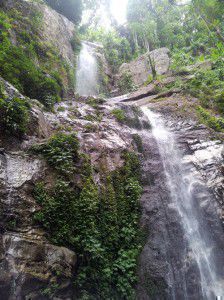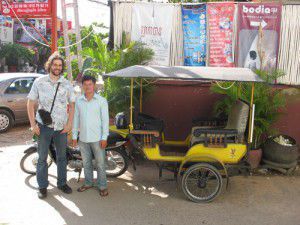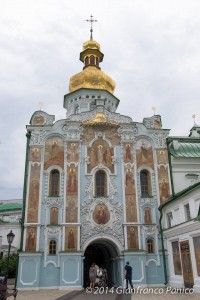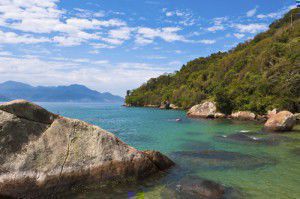Language of the Week: German
As the annual festival of Oktoberfest gets underway in Munich this week, we’ve chosen German as our latest Language of the Week.
If you’re anything like us, when you hear ‘Oktoberfest’ you probably think of beer (oh – just us?) but there’s a lot more to the event than that. Oktoberfest is actually the world’s largest funfair, and it’s a 16-day festival running from late September to early October. There is a lot of beer consumed though – 6.7 million litres at the 2013 festival! – and it’s also a great place to try traditional German food.
German is often described as a less attractive language to learn than, say, Spanish or Italian, but we’re not sure we agree. For one thing, German’s far more creative. How many other languages have a word for ‘a face badly in need of a fist’? It’s backpfeifengesicht, in case you were interested.
Here are a few fun facts about German: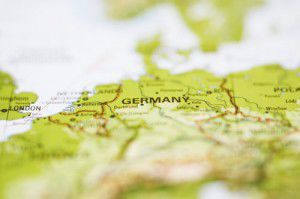
– It’s an official language of five countries: Germany, Austria, Switzerland, Luxembourg and Liechtenstein, and has at least 100 million native speakers around the world.
– You might know more German than you think – ever used the word ‘angst’, ‘kindergarten’ or ‘doppelgänger’? These are just a few examples – there are plenty more.
– German is known for its very long words, which are created by sticking together other words to explain a concept. In 2013, the language lost its longest word – rindfleischetikettierungsueberwachungsaufgabenuebertragungsgesetz – which is 63 letters long and means ‘law delegating beef label monitoring’, thanks to a change in EU regulations.
However most of these long compound words don’t appear in the dictionary. The longest word that does appear is kraftfahrzeughaftpflichtversicherung (‘automobile liability insurance’) at a mere 36 letters long, although we wish donaudampfschifffahrtsgesellschaftskapitaenswitwe (widow of a Danube steamboat company captain) was in there too.
We love this video by Language Hat, which is a really fun explanation of how these long words are put together. If you don’t find yourself craving rhubarb cake or beer by the end of it, you’re doing better than us!
– ‘Gift’ may be a nice thing in English, but in German it means ‘poison’, so be careful who you give it to…
– In German, when telling the time, ‘half three’ actually means ‘half an hour before three’ (i.e. ‘half past two’) – definitely worth knowing before making any plans.
– Germany is often known as Das Land der Dichter und Denker, which means ‘the land of poets and thinkers’. Not surprising really, since this is the country that gave us Johann Wolfgang von Goethe, Thomas Mann, Albert Einstein and the Brothers Grimm. It’s also the home of the first pregnancy test, invented by German researchers Selmar Aschheim and Bernhard Zondek. So now you know.
We know there are a lot of German fans out there, so please tell us why you love the language and the country – either in the comments or on Twitter to @EuroTalk with hashtag #loveGerman 🙂
And if we’ve convinced you to give German a go, remember you can start learning it completely free with uTalk or the free demo on our website.
10 reasons to visit… Thailand
Jakub was a junior developer at EuroTalk until recently, and last month he spent a few weeks in Thailand, so we asked him for his tips on what to see and experience in this amazing country. Here are Jakub’s ten reasons to visit Thailand… and if you’ve got anything to add, please write us a comment at the bottom of this post, or tweet us @EuroTalk.
1. Food
Thai food is my personal favourite out of Asian cuisine. A food lover (especially carnivorous) will find himself in a gastronomical paradise once he sets his foot on this land. There are BBQ’d meat stalls every 50-100 metres which offer chicken, pork or liver on a skewer for 10 bahts. The equivalent of 18p. How cool is that. Apart from this you can come across stalls offering rottee (Asian version of pancakes), different kinds of sausages, soups, curries and the all-time classic – pad thai. And if you’re brave enough you can have some deep fried crickets, cockroaches, scorpions and snakes. All made from juicy meat, intense spices and fresh vegetables for less than a quarter of the average UK price.
2. Stunning views
Once you got your plate full of Thai deliciousness you would like to sit down and relax. No worries, dear traveller! You can enjoy gorgeous mountain views in the north (i.e. Doi Suthep near Chiang Mai) or chill out by the beach side in the south (i.e. Ao Nang) or even two combined on one of many islands (such as Koh Tao). Even the cities themselves can offer unique street panoramas (Chiang Mai’s old city).
3. Scuba diving
Thailand is one of the best places on Earth to admire the underwater world. Loved the ocean exploration programmes on travel channels? Well, now you can see everything with your own eyes and within reach of your hand, floating around just like an astronaut in outer space. And it feels like a different world.
4. Moon Parties
Koh Phangan, an island in the south of Thailand, is the host of one of the biggest parties in the country. The biggest one is the Full Moon Party, where you can dance to club music on a beach until sunrise, drinking the famous buckets, and get your body painted with UV reflective paint. Want to go to the jungle? Sure thing! Just keep your eyes peeled and look for the next Half Moon Party, where you can also enjoy dance music topped with fire shows and chilling out on hammocks. There are also less crowded, but still popular Red Moon Parties, Blue Moon Parties, Boat Parties. This island never goes to sleep.
5. Riding a scooter
Scooters and motorcycles play a big part in Asian everyday life – having a scooter is as essential as having a fridge or a washing machine. On top of that you can watch things unseen in Europe, like driving without helmet and shirt, 4-5 people on one scooter, ladies sitting sideways or even dogs balancing in the back! Scooter rental is very popular and, in my opinion, the first thing you should do when coming to a new town. Renting a scooter for a day costs as much as two taxi rides. Beware though – if you haven’t ridden a motorcycle previously, especially in dense traffic, Thailand is not a good place to learn how to drive, even if some rental places will let you without previous experience.
6. Climbing
Krabi is known for its gigantic limestone walls and for that reason it is the Thai capital of rock climbing. Even if you haven’t done this before, don’t worry – there’s a dozen climbing centres offering taster and training sessions. And if you want to spice up your climbs, why not try deep water soloing? If you fall off a wall, you take a dip in the sea and start all over again!
7. Long tail boat ride
Thais know what real recycling is. Apart from the bright, eye-catching colours of their boats there’s one element that stands out – a massive engine taken out from a car and installed on a hinge with a propeller attached to it. You can ask just for a cruise to see magnificent rocks sticking out of the sea or visit a tiny remote island and feel like Robinson Crusoe.
8. Tuk tuk rides
Although tuk tuk drivers will charge you twice or three times as much as a regular taxi, it’s worth the money as a one-off experience. Tuk tuks differ between towns, and the most colourful and distinctive are in Bangkok – motorcycle front with integrated rickshaw-like back is quite comfortable (provided you’re not a 6″3′ bloke) and, if you’re lucky and tip the driver, you might see some wicked tricks on the road (not for the faint-hearted).
9. Thai massage
Yes, I know it sounds cliché, but come on, it’s like being in England and not drinking English tea. One hour-long session and you’ll discover muscles in your body you’ve never used, leaving you crawling out of the place pleasantly relaxed. One thing to bear in mind is to go to such a place during the day with workers wearing uniforms, not by night to a dodgy place with ladies in dresses and high heels.
10. Everything’s cheap
All the things mentioned above have one huge advantage: they’re incredibly cheap. Piles of food for less than 3 pounds, hiring a scooter for as much as a single underground fare, night in a single room for 4 pounds, beer in a bar for a quid and the list goes on. The only real cost is the plane ticket and the rest – you could easily have a month’s trip with a 500 pounds budget. And it’s totally worth it.
Jakub
Thinking of following in Jakub’s footsteps? He found that away from the main tourist areas, knowing a little bit of Thai was really useful. So before you jump on a plane, remember to download uTalk or check out one of our other Thai programs.
Quiz: Which language should you learn?
Want to learn a language but not sure which one to go for? Try our new quiz for inspiration…
Did you get a good one? Tell us what you think in the comments, and don’t forget to share with your friends to see if they get the same!
And if you’re still a bit undecided, download our free uTalk app for iOS and try out 111 different languages, to see which one you like 😉
10 reasons to visit… Kiev
A couple of months ago, I spent a few days in the Ukrainian city of Kiev, which turned out to be a fascinating and occasionally surprising place to visit. So here, in no particular order, are my top ten reasons to go and check it out for yourself.
1. It’s so cheap!
Probably one of the highlights of spending five days in Kiev was figuring out how much we’d just paid for each meal, trip etc… After eating a ridiculously large lunch at the fantastic Vagon, including drinks, appetisers and dessert, we realised it only cost £15 for two people. And even better, you can ride the Metro for about 10p (regardless of distance), take buses all over the city for 10p and ride the Funicular for about 20p. Taxis tend to charge you a flat, tourist rate of 100 hyrynas, which is still only around £5 to get from the airport to the city.
2. Chill out on the beach
Yep, there’s a beach. If you cross the bridge to the other side of the river, there’s a proper sandy beach where locals go to soak up the (surprisingly hot) sun. You can abseil from the top of the hill down to the beach, bungee jump from the bridge, swim in the river, or just sunbathe and eat ice creams that cost you less than 50p.

3. Crazy nightlife
Ukrainians seem to like to party, with lots of booze and dancing! Coyote Ugly is a favourite spot where you can smoke shisha, drink vodka shots, dance on the bar, and still come away with change from £20. However, be warned that if you ask for water in a British accent, you’re likely to come away with yet another (unwanted) shot of vodka! Apparently Arena City (quite central) is also worth a look with several different bars and outdoor seating areas.
4. Maidan square
Maidan is the city’s central square and home to some of the most recognisable statues and monuments. During our visit, it was also home to numerous barricades – many built from rubble, rubbish, tyres and whatever else was to hand. There were also many burned-out cars and even buildings which had been burned out by the police during the recent conflict. People had even pulled up the cobblestones from the ground and used them to throw during the riots. Here and in Khreschatik street you’ll also find lots of memorials to people who died during the revolution.
5. Take a trip to the world’s most famous nuclear disaster site
Admittedly this might not be on every tourist’s to-do list, but it certainly was on mine! You can take a day-trip to Chernobyl for around £100 per person, which includes an extremely well-organised bus trip to the town, lunch, fully-guided tour by really excellent guides and the amazing opportunity to take pictures by the reactor and in the deserted town of Pripyat, with its famous funfair, which was never opened to the citizens of the town before it was evacuated in 1986.

6. Brunch at Koritsa
I don’t know if this place is particularly famous, but it should be, for its awesome brunches with eggs, pancakes, cake and whatever else, plus juice and coffee for less than £15 for two people. Also try Vagon for its fantastic tagines, Varenichnaya for Ukrainian specialities (Vareniky are ravioli-esque dumplings) or Puzata Hata, which is a cafeteria-style chain that sells Ukrainian food by weight.
7. Take the Funicular up the hill
If you read Liz’s post a few months ago about her trip to Naples, you’ll remember she had a trip up the hill on the ‘funicolare’. Well this is pretty much the same thing… A carriage which takes you up the side of the hill for the eye-watering price of 20p. When you’re at the top, you can enjoy an amazing view of the city and river, as well as the park (albeit with very spiky grass) and one of the more surreal monuments – the archway representing friendship between Russia and Ukraine… The less said about that the better, maybe. Try a Kvas which is a really, really strange drink – something like a very sweet, non-alcoholic beer.
8. Beserabka market
This is a covered market just off Khreshatyk (the main street) and is a great place to wander around and see a range of really great quality fruit, caviar, salami, cheese and lard (which is strangely popular here…). Just be aware that the vendors will do the hard-sell on you even if you don’t speak Russian. We walked through with no intention of buying anything and came away with a jar of caviar and a block of cheese without even realising what was happening!
9. Pechersk Lavra
This landmark translates as something like the Monastery of the Caves, and is a particularly unique site, where you can spend at least a whole afternoon. It’s a complex of various different churches, as well as the crypts below where you can see the mummified bodies of saints by candlelight. The architecture here is particularly spectacular, with a myriad of golden domes, not to mention a great view of the city.
10. Sightseeing all the monuments around the city
There are loads of different statues and buildings around the city that are worth seeing. Climb the hill to see the St Andrew Church (and an amazing view), visit the St Sophia Cathedral (one of the Seven Wonders of Ukraine, apparently) and several other cathedrals, churches and more…
Don’t forget to download our free app, uTalk, and learn the basics in Russian or Ukrainian (or both!) before you leave – not many people in Kiev speak English, so you may find knowing a few words can make a huge difference.
And if anyone has any other tips or reasons to visit Kiev, please let us know in the comments!
Alex (with thanks to Gianfranco for the photos)
10 reasons to visit… Brazil
Where else for this week’s ’10 reasons…’ post but Brazil? This huge, beautiful and unique country will be attracting tourists by the thousands over the coming weeks, so here are our top tips – whether you’re visiting for the football and have a bit of spare time, or you’re planning a holiday for later in the year.
1. Ilha Grande
A beautiful island off the coast of Rio, which can be reached by ferry (no cars allowed – there are no roads for them to drive on anyway). It’s a great place to see local wildlife, and also has a fascinating history, having been a pirates’ lair, a leper colony and a prison in its time.
2. Beaches
With over 7,000km of coastline, it’s no surprise that Brazil has a lot of beaches. It would be impossible to name them all, but a couple of the most famous are Copacabana Beach in Rio de Janeiro, which is particularly well known for its New Year celebrations, attended by about three million people each year, and Praia do Cassino, near Rio Grande in the south of the country, which is thought to be the longest beach in the world at an incredible 245km.
3. Languages
With over 180 indigenous languages, Brazil is a language lover’s dream. Although most tourists should be able to get around with a smattering of basic Portuguese, if you’re heading off the beaten track, you may hear people speaking Tupí, Arawak, Carib, and Gê languages, among many others.
4. Let’s dance!
Brazil is probably best known for samba, the African-influenced music and dance style now popular across the world, and celebrated most famously at the annual Carnaval in Rio de Janeiro. Samba is far more than just music; it’s a hugely important part of Brazilian culture, and you’d be hard pressed to visit the country without experiencing it (and why would you want to?). Capoeira is another well-known tradition, which combines dance, acrobatics and martial arts set to music. Someone once tried to teach me some capoeira moves at university. It did not go well – turns out it’s quite difficult, especially if you’re as uncoordinated as I am – but it’s great fun to watch.
5. Iguaçu Falls
Found on the border between Brazil and Argentina, the Iguaçu Falls (or Iguazu Falls if you’re in Argentina) are one of the region’s most famous natural landmarks. There are 275 waterfalls in total, along a 2.7km stretch of the Iguazu River. Be sure to see the Devil’s Throat, a U-shaped chasm right on the border between the two countries, and if you can, take a boat trip under the falls for the ultimate water ride.
6. Christ the Redeemer
Another world-famous landmark, and one of the New Seven Wonders of the World, the 124 feet high statue of Jesus Christ hit the headlines last week when travel blogger Lee Thompson was given permission to climb to the top to take a selfie. Towering over the city of Rio de Janeiro from the top of the Corcovado mountain, the monument is a must-see if you go to Brazil. Unlike Lee, you won’t be able to go inside the statue, but you can visit the chapel in the pedestal at its base and the views from the mountain are still amazing.
7. Sea Kayaking in Paraty
Staying in Rio, if you want to get away from the crowds, why not try a spot of sea kayaking in Paraty Bay? Whether you’re a beginner or an experienced kayaker, this is a great way to enjoy fantastic views of the town and mountains, relax on the beautiful sandy beaches and explore a mangrove forest on your way to the base of the Sugarloaf mountain.
8. Amazon
The rainforest, not the website. Not an area to venture into unprepared, or alone, obviously, but great if you’re tired of the cities and want to get back to nature. Take a boat trip down the river, have a treetop adventure (there’s even a hotel), or try your hand at piranha fishing (not sure about that one, personally). The rainforest is full of wildlife, although many of the animals and birds will keep themselves to themselves, so if you do encounter any, it’s pretty exciting.
9. Food
Being a huge country, Brazil has many, many types of food, from feijoada (a black bean stew with beef and sausage), to pastéis (deep fried parcels containing pretty much whatever you like – cheese, beef, cod, you name it), quindim (a custard dessert made from sugar, egg yolks and coconut) to bolinhos de chuva* (fried doughballs sprinkled with sugar and cinnamon). It’s safe to say that whatever your tastes, you’ll probably find something you like in Brazil.
* I’m tempted to go to Brazil right now for some of these.
10. Football…?
Someone told me there’s a big football tournament happening in Brazil this month, so if you’re a fan, now might be a good time to visit. I don’t know about that, but I do know Brazil are a huge footballing nation. They’ve won the World Cup (that was it!) five times, more than any other nation, and will be hoping to make it six in a few weeks. If they can get past England, obviously…
If you are visiting Brazil, remember to learn some basic Brazilian Portuguese before you go – it’ll make everything a lot easier and much more fun. Take uTalk for iOS with you and you’ll never be lost for words!
I realise I’ve barely scratched the surface of what this huge country has to offer, so if you want to share any tips of your own, please do so in the comments.
Liz
